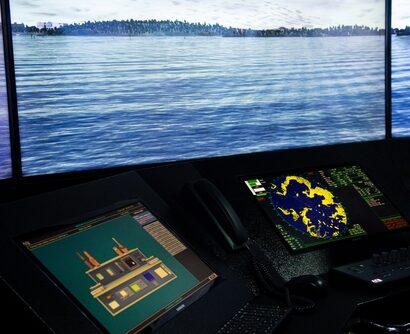Abstract: India faces numerous challenges in its neighbourhood, characterised by territorial disputes, geopolitical rivalries, and economic dependencies. Tensions with China and Pakistan are cornerstones of India’s troubled neighbourhood past; however, dwindling partnerships with countries like Nepal and Sri Lanka reflect poorly on India’s regional leadership. To regain influence, India must enhance regional cooperation by building trust with its neighbours and showcasing its commitment to infrastructure development.
Problem statement: How can India manage its regional stronghold in South Asia by engaging positively with its neighbours?
So what?: Relations with Nepal and Sri Lanka are a litmus test for India to prove its regional influence since it ambitions to become a global power. Improving relations with neighbours is paramount for India to project itself as a reliable partner.

Source: shutterstock.com/Anton Balazh
India’s Neighbourhood Challenges
India lies at the intersection of South Asia and the Indian Ocean and shares its land border with Afghanistan, Bangladesh, Bhutan, China, Myanmar, Nepal, and Pakistan. Due to its geographic and geopolitical location, India faces a wide range of political, cultural, and economic issues. The activities in neighbouring countries have far-reaching implications for India’s economic development and national security. Indian independence, a significant moment in August 1947, changed the boundaries of British India and brought border & territorial conflicts, geopolitical rivalries, economic hardships, political instabilities, and strategic competitiveness to the subcontinent, which have further led to tensions in the South Asian region. India’s neighbours in all directions have dealt with political and economic turmoil, which have directly and indirectly impacted the country’s response towards its neighbourhood policy and stability over a period of time.
Pakistan takes centre stage during discussions on India’s challenging neighbourhood as India shares a strained relationship with its immediate neighbour to the northwest. At the heart of the strained India-Pakistan relationship is the unresolved Kashmir conflict and cross-border terrorism from Pakistan-based militant groups, which have historically destabilised India, and continue to do so, especially in Jammu and Kashmir.[1] The rivalry with Pakistan demands that India invests the majority of its budget on defence and security apparatus and military preparedness in highly sensitive zones. Besides security, the strained relationship has impacted the two countries’ bilateral trade and economic collaboration.[2] Due to technically no communication between the leaderships of the two countries, even regional organisations such as the South Asian Association of Regional Countries (SAARC) have failed to realise their potential to develop a unified South Asian economy. Trade routes remain unutilised, hence further dividing the countries into tight compartments based on geopolitical and territorial rivalries.
The rivalry with Pakistan demands that India invests the majority of its budget on defence and security apparatus and military preparedness in highly sensitive zones.
The People’s Republic of China (PRC) is a complex challenge for India’s national security and economy as China’s economic & strategic influence goes beyond India’s developmental aid. The two countries share a contentious border in regions such as Arunachal Pradesh and Ladakh, and the 2020 Galwan Valley clash best reflects the rivalry, as it reemphasised the border conflict between the two nations after many years.[3] Besides territorial competition, the PRC’s presence in the Indian Ocean Region (IOR),[4] neighbouring countries through the Belt and Road Initiative (BRI),[5] and the China-Pakistan Economic Corridor (CPEC)[6] presents a strategic challenge to India’s regional dominance in South Asia. Economically, the PRC is way ahead of India as there exists a huge trade imbalance between the two countries, with India heavily relying on Chinese imports, specifically in electronics and machinery.[7] Even though India has gradually started to take charge of its manufacturing sector with initiatives such as Make in India, India still relies on the Chinese supply chain mechanism to fulfil its manufacturing needs. The PRC’s presence in India’s neighbouring countries poses a significant challenge to its prestige as the PRC has successfully bent political dispensations in its favour due to its economic powerhouse, which India has still not fully done.
Pakistan and the PRC find a mention whenever India’s neighbourhood is actively discussed as they present a complex challenge to India’s security, economic development, and regional stronghold. However, smaller nations such as Nepal, Sri Lanka, Bangladesh, Afghanistan, the Maldives, and Myanmar pose similar significant challenges to India’s security and economy. Though India enjoys civilisational and historical ties with countries like Nepal and Sri Lanka; however, political necessities have forced these countries to find a regional alternative in the form of the PRC, as China has effectively replaced India as a developmental partner. Nepal, with which India has shared historical linkages since time immemorial, is a landlocked country that finds itself balancing between India and the PRC. India and Nepal always shared cordial relations; however, political instability, border disputes, the PRC’s growing influence, and other factors have strained relations between the two countries. Moreover, the PRC’s infrastructure development projects under the BRI are a cause of grave concern for India’s strategic interests in Nepal, as it completely overshadows the infrastructure aid provided by India for Nepal’s holistic development.[8] Sri Lanka presents the same set of challenges as Nepal as its over-dependence on Chinese loans poses a significant threat to India’s naval security since, in the event of non-payment of such high-interest loans, countries are required to give up national assets. The lease of the Hambantota Port and Colombo City Port project poses a significant security threat to India[9] as the PRC has taken over many developmental projects in Sri Lanka under its ambitious BRI.
The lease of the Hambantota Port and Colombo City Port project poses a significant security threat to India as the PRC has taken over many developmental projects in Sri Lanka under its ambitious BRI.
Bangladesh, up until August 2024, shared friendly and collaborative relations with India under the leadership of former PM Sheikh Haseena. However, after widespread student protests and the installation of a new government headed by Muhammad Yunus, tensions have escalated between India and Bangladesh, as the latter saw a rise in violence against its Hindu minorities by Islamist forces in the country.[10] Similarly, Myanmar’s long-shared border to India’s east is ground for further threats, as Myanmar acts as a gateway for India to Southeast Asia, particularly through the India-Myanmar-Thailand Trilateral Highway, which aimed to increase regional connectivity. However, political instability since the coup in 2021 has disrupted trade and infrastructure projects. Additionally, the illegal migration to the northeastern states, particularly Mizoram and Manipur, has been a contentious point in both countries’ relations and has led to illegal drug, timber, and wildlife trade along the border.[11] Maldives has had an active ‘India-Out’ campaign, which protested the Indian military’s presence in the island nation and called it a threat to their sovereignty.[12]
India does have a volatile neighbourhood, and with the PRC’s increasing influence, India is even losing its influence in smaller states such as Nepal and Sri Lanka. China has positioned itself as a strong influence in these countries by financing easy loans and building critical infrastructure. India losing its credibility in these countries is a matter of grave concern, and it needs to address policy gaps in its approach towards its neighbours.
India does have a volatile neighbourhood, and with the PRC’s increasing influence, India is even losing its influence in smaller states such as Nepal and Sri Lanka.
The PRC’s Strategic Inroad in Nepal and Sri Lanka
The BRI is one of the PRC’s flagship global development strategies, launched in 2013 by President Xi Jinping. Its objective is to enhance trade routes and boost regional connectivity through infrastructure investments worldwide. The BRI projects cover countries across Asia, Africa, and Europe, with South Asian countries like Nepal and Sri Lanka being significant beneficiaries.
Chinese BRI Projects in Nepal
Nepal’s relationship with India is a paradox bound by history and culture, yet fractured by realpolitik. Until 2015, India and Nepal enjoyed cordial relations based on their shared history, civilisational ties, and developmental approach; however, the 2015 Indian blockade of Nepal proved to be a highly controversial and critical event in the diplomatic history of Nepal-India relations.[13] The Indian blockade was a response to Nepal’s newly adopted constitution, which allegedly marginalised the Madhesi community (ethnic-Nepali-origin people living in southern Nepal). Following the adoption of the new constitution, India imposed an informal blockade and severely restricted fuel and good supplies to Nepal, including essential goods like medical supplies and food. The blockade resulted in Nepal seeking closer ties with China, which the latter seized and ramped up strategic investments, infrastructure projects, and enhanced diplomatic ties under the BRI.[14]
Under BRI, China has invested in railway projects, highways, hydro-power plants, and other strategic connectivity projects. Some significant investments include the Tibet-Nepal Railway,[15] the Upper Trishuli-1 Hydroelectric Project,[16] the Pokhara Regional International Airport,[17] and the Kathmandu-Lhasa Road.[18] Apart from strategic investment in Nepal’s infrastructure, the PRC also signed a border agreement with the country in 2019, namely the Nepal-China Boundary Management Agreement, which demarcated boundary lines between the two countries, henceforth providing the PRC with access to new trade routes, including the ability to transport goods to Nepal through Tibet, bypassing India.[19]
Apart from strategic investment in Nepal’s infrastructure, the PRC also signed a border agreement with the country in 2019.
Though India has claimed that it engages with its neighbours through the Neighbourhood First Policy (NFP), in terms of Nepal, the policy has become hollow as many experts have emphasised that India has failed to complete projects on time, further increasing the trust deficit with Nepal.[20] While China has shown commitment by building highways and airports, India’s flagship projects, such as the Mahakali River hydropower plant,[21] remain mired in delays. Even the soft power India emphasises is gradually eroding as more Nepali students now flock to Chinese universities, raising questions about India’s commitment to the region.[22] Nepal’s dependence on the PRC has long-term implications for India’s strategic interests in the region. Nepal’s growing reliance on the PRC can weaken India’s position as the primary trade partner and disrupt the traditional trade routes that have historically linked Nepal to India. Nepal’s increasingly distant behaviour also poses critical security implications as the increasing Chinese presence in Nepal weakens India’s strategic buffer along the northern border and heightens concerns about the PRC’s military ambitions in the region. The 2017 Doklam stand-off between India and the PRC highlighted how China-Nepal transit agreements could destabilise India’s Himalayan security architecture.[23]
Sri Lanka’s Debt Dependency and Delhi’s Dilemma
Not long ago, Sri Lanka was all over the news when its economy imploded in 2022, in a spectacular fashion. With foreign reserves evaporating and inflation soaring up to 54%,[24] angry mobs stormed the presidential palace and protested the elite leadership’s handling of a critical economic situation and over-dependence on Chinese loans.[25] The crisis was not merely economic but geopolitical as the Rajapaksa regime bargained with the PRC and gave away Hambantota Port on a 99-year lease to them.[26] The Hambantota Port became the symbol of Chinese debt-trap diplomacy as the Sri Lankan government could not service its debt. Today, the port operates just 550 nautical miles from India’s coast, a direct threat to India’s maritime security.[27] Other than Hambantota Port, the PRC has also given funds to the tune of $1.4 billion to the Colombo Port City Project, which aims to create a financial hub.[28]
During the Sri Lankan economic crisis, India responded with a $4 billion bailout,[29] positioning itself as Sri Lanka’s lender of last resort; however, this was not enough to buffer the trust deficit, as politicians and the public have raised questions about India’s commitment to the region.
Why India Loses the Narrative?
India has increasingly found itself losing the narrative to the PRC in Nepal and Sri Lanka, which are litmus tests for India’s global ambitions. India lacks the PRC’s deep pockets, making it difficult for India to give away loans on easier conditions. Moreover, India’s image as a ‘big brother’ has often been considered an overbearing influence on the internal matters of Nepal and Sri Lanka,[30] thus creating ambivalence or even resentment. In contemporary times, elite leadership in Nepal has perceived India’s treatment of Nepal as a strategic buffer zone against the PRC as undermining Nepal only to fulfill India’s strategic interests.[31] The 2015 Indian blockade exacerbated these opinions, resulting in an anti-India sentiment amongst the leadership as well as the public of Nepal. The PRC, on the other hand, has positioned itself as a neutral partner, offering economic aid and investments without political baggage. India has a long road ahead to match the PRC’s economic might, allowing it to exert considerable influence in Nepal and Sri Lanka through infrastructure development and strategic investments. The PRC has countered India’s regional dominance by executing several critical national development projects on time, as India’s lacklustre approach to completing infrastructure projects in neighbouring countries is well known. The struggle for India to complete its projects has made it an unreliable partner for its South Asian neighbours, who look up to India for developmental assistance.
In contemporary times, elite leadership in Nepal has perceived India’s treatment of Nepal as a strategic buffer zone against the PRC as undermining Nepal only to fulfill India’s strategic interests.
India’s inability to match the PRC’s scale of economic aid is further re-emphasised by the former’s failure to capitalise on its soft power. Nepal and Sri Lanka share historical, civilisational, and people-to-people connections with India even before modern borders were introduced. However, due to India’s paternalistic approach towards its neighbours, its soft power is eroding significantly. The PRC is currently winning the narrative war against India in countries which are labelled ‘natural allies’ due to shared history and experiences. India, on its part, needs to identify policy gaps in the NFP and engage with Nepal and Sri Lanka without a paternalistic approach, which amounts to India’s undue interference in their internal affairs. To salvage the NFP, India must confront uncomfortable lapses in its approach towards its neighbours, who are increasingly drifting towards the PRC. India needs to acknowledge the ‘big brother’ baggage and prevent its paternalistic approach from alienating crucial neighbours as it harms India more and pushes neighbours into the waiting arms of the PRC. If India wants to be a serious and committed alternative in Nepal and Sri Lanka, it urgently needs to match the PRC’s speed, rather than its scale as Indian critical infrastructure projects have not seen the light of the day, whereas the PRC has built highways, roads, and airports, hence polarising public sentiment.
BIMSTEC’s Potential as a Regional Alternative to the PRC’s Strategic Dominance
South Asia as a fragmented region is characterised by the non-functional South Asian Association for Regional Cooperation (SAARC), which has failed to live up to its potential due to political tensions, particularly between India and Pakistan.[32] The long-standing rivalry between the two nuclear powers has rendered SAARC largely ineffective. The breakdown of SAARC’s ability to facilitate regional cooperation signifies that India must take leadership of the Bay of Bengal Initiative for Multi-Sectoral Technical and Economic Cooperation (BIMSTEC), where tensions with Pakistan are not a hindrance, as Pakistan is not a member state of BIMSTEC. In addition to India, BIMSTEC includes countries like Bangladesh, Bhutan, Nepal, Sri Lanka, Myanmar, and Thailand and offers a platform for India to lead a regional grouping which is free from the divisiveness of SAARC.
BIMSTEC includes countries like Bangladesh, Bhutan, Nepal, Sri Lanka, Myanmar, and Thailand and offers a platform for India to lead a regional grouping which is free from the divisiveness of SAARC.
India, being the largest and most populous member state of BIMSTEC, has the potential to play a central role in reinvigorating the organisation for regional integration. Through its leadership over the years, India has actively advocated for enhancing physical connectivity, energy cooperation, trade facilitation and counterterrorism cooperation within BIMSTEC.[33] To showcase its commitment to regional integration, India can spearhead initiatives for improved connectivity through regional infrastructure projects like the BBIN Motor Vehicles Agreement (Bangladesh, Bhutan, India, Nepal) to facilitate a smoother movement of goods and people.[34] Moreover, India can also utilise the BIMSTEC platform to focus on environmental cooperation in areas like disaster management, water resources management, and biodiversity conservation, as the South Asian region is vulnerable to the impacts of climate change. Conversations and substantial actions on climate change may generate goodwill for India in Nepal and Sri Lanka, as both countries have faced the disastrous impacts of climate change. India’s engagement through BIMSTEC allows it to counter China’s strategic dominance by providing an alternative to Beijing’s regional initiatives, such as the BRI.
Other than hard power leverage, BIMSTEC also allows India to capitalise on soft power by introducing educational exchanges in BIMSTEC countries, promoting educational and technological cooperation. If India invests in cultivating its soft power through cultural exchanges and people-to-people connections, India can match the PRC’s dominance in the region and once again become a reliable and committed partner for neighbouring countries.
However, revitalising BIMSTEC is easier said than done as it faces a myriad of challenges in its operations, ranging from underfunding, bureaucratic delays, and lack of visibility. On its part, India needs to take the organisation’s leadership and institutionalise BIMSTEC summits to gain more visibility from its member states as well as other international organisations. To generate reliability among its neighbours, India also needs to fast-track projects such as the India-Myanmar-Thailand Trilateral Highway, which has now become a symbol of India’s non-commitment towards strategic infrastructure development in its neighbourhood. Besides the above-mentioned project, India should also pay attention to incomplete projects in Nepal and Sri Lanka, as their unfinished nature poses more difficulty for the country.
India needs to take the organisation’s leadership and institutionalise BIMSTEC summits to gain more visibility from its member states as well as other international organisations.
Therefore, India shoud
- fast-track and complete existing projects;
- mobilise historical ties for soft power; and
- supplement infrastructure projects to match the PRC’s involvement.
Looking Forward
The PRC’s strategy in Nepal and Sri Lanka is realistic, wherein they exploit economic desperation to secure strategic assets. However, India is still mired in conflicts with its immediate neighbours, while its policies survive on ad-hoc bailouts and empty slogans. India must ask itself stringent questions on its role in the neighbourhood: will it remain a reactive power, or will it reinvent itself as a collaborative leader? India’s aim in its neighbourhood should be driven by promoting equity, collaboration, and partnership rather than simple dominance. The current sentiment among the elite leadership of Nepal and Sri Lanka is increasingly drifting towards the PRC, owing to its economic and strategic might; however, it is high time that India manages its act within its highly volatile neighbourhood.
Shivam Tiwary is an independent researcher whose fields of interest include national security, South Asian politics, and Khalistan. He has previously authored research articles on the resurgence of Khalistan through social media and the impact of drone technology on the drug trade in Punjab, among others. The views contained in this article are the author’s alone.
[1] Manan Dwivedi, “Cross Border Terrorism: Irritants in Indo-Pakistan Relations,” Indian Journal of Asian Affairs 21, no. 1 (June-December 2008): 31.
[2] Ranjit Singh Ghuman & Haqiqat Singh, “Economic Implications of Trade Curbs between India and Pakistan through Wagha Border,” Centre for Research in Rural and Industrial Development, Pg. 10, https://www.crrid.res.in/pdf/inddia-pakistan-trade.pdf
[3] “What was the India-China military clash in 2020 about?,” Reuters, last modified October 25, 2024, https://www.reuters.com/world/asia-pacific/what-was-india-china-military-clash-2020-about-2024-10-25/
[4] “China’s growing influence in Indian Ocean is worrying. It harms the region’s stability,” The Print, last modified March 27, 2024, https://theprint.in/opinion/eye-on-china/chinas-growing-influence-in-indian-ocean-is-worrying-it-harms-the-regions-stability/2017049/
[5] Bhumitra Chakma, “The BRI and India’s Neighbourhood,” Strategic Analysis 43, no. 3 (2019): 184.
[6] Syeda Ailiya Naqvi, “China-Pakistan Economic Corridor: Implications for India,” Pakistan Horizon 70, no.3 (July 2017): 120.
[7] “China’s share in India’s industrial goods imports jump to 30% from 21% in last 15 years: GTRI,” The Hindu, last modified April 28, 2024, https://www.thehindu.com/business/Economy/chinas-share-in-indias-industrial-goods-imports-jump-to-30-from-21-in-last-15-years-gtri/article68117064.ece
[8] “India’s Nepal Challenge, China Factor,” India Foundation, last modified January 2, 2025, https://chintan.indiafoundation.in/articles/indias-nepal-challenge-china-factor/
[9] “Colombo City Project and Indian Concerns,” Vivekananda International Foundation, last modified June 11, 2021, https://www.vifindia.org/article/2021/june/11/the-colombo-port-project-and-indian-concerns
[10] “India-Bangladesh relations: Challenges and Opportunities,” Takshashila Institution, last modified October 23, 2024, https://takshashila.org.in/research/india-bangladesh-working-paper
[11] “From Poppy Fields to Black Markets: Understanding the Drug Trade Across India and Myanmar,” Observer Research Foundation, last modified October 3, 2024, https://www.orfonline.org/research/from-poppy-fields-to-black-markets-understanding-the-drug-trade-across-india-and-myanmar
[12] “Understanding the ‘India Out’ campaign in Maldives,” Observer Research Foundation, last modified October 7, 2022, https://www.orfonline.org/research/understanding-the-india-out-campaign-in-maldives
[13] Bhuwaneswor Pant, “Socio Economic Impact of Undeclared Blockade of India on Nepal,” Nepal Journal of Development Studies 1, no. 1 (2018): 21.
[14] “After the ‘Blockade’: China’s Push into Nepal,” The Diplomat, last modified February 1, 2017, https://thediplomat.com/2017/02/after-the-blockade-chinas-push-into-nepal/
[15] “Nepal’s Trans-Himalayan Dream: A Journey Through High Costs and Higher Stakes,” Vivekananda International Foundation, last modified September 9, 2024, https://www.vifindia.org/2024/september/09/Nepal-s-Trans-Himalayan-Dream-A-Journey-Through-High-Costs-and-Higher-Stakes
[16] “Nepal: Upper Trishuli-1 Hydropower Project,” Asian Infrastructure Investment Bank, https://www.aiib.org/en/projects/details/2019/approved/Nepal-Upper-Trishuli-1-Hydropower-Project.html
[17] “Chinese investments in Nepal,” Gateway House, last modified September 16, 2016, https://www.gatewayhouse.in/chinese-investments-nepal-2/
[18] “A Brief on China’s BRI in Nepal,” Chennai Centre for China Studies, last modified October 15, 2023, https://www.c3sindia.org/post/a-brief-on-china-s-bri-in-nepal-by-suprithi-sudharshana
[19] “Developments on Nepal-China Border: Concerns for India,” ISAS Briefs, last modified, July 1, 2020, https://www.isas.nus.edu.sg/papers/developments-on-nepal-china-border-concerns-for-india/
[20] “CAG asks MHA to pace up completion of much-delayed India-Nepal roads,” Business Standard, last modified April 17, 2022, https://www.business-standard.com/article/current-affairs/cag-asks-mha-to-pace-up-completion-of-much-delayed-india-nepal-roads-122041700114_1.html
[21] “Going beyond the mega project mindset is a must for India-Nepal relations,” Down to Earth, last modified April 24, 2018, https://www.downtoearth.org.in/water/going-beyond-the-mega-project-mindset-is-a-must-for-india-nepal-relations-60285
[22] “Nepali Students in China: A Source of Soft Power for Beijing?,” CSEP, https://csep.org/reports/nepali-students-in-china-a-source-of-soft-power-for-beijing/
[23] “India on One Side, China on the Other: Small-State Security in the Himalayas,” United States Institute of Peace, last modified January 8, 2025, https://www.usip.org/publications/2025/01/india-one-side-china-other-small-state-security-himalayas
[24] “How Sri Lankans are adapting their lives to survive the crisis,” The News Minute, last modified August 2, 2022, https://www.thenewsminute.com/news/how-sri-lankans-are-adapting-their-lives-survive-crisis-166419
[25] “Sri Lanka’s Economic Crisis: Lessons for those in China’s Debt,” Observer Research Foundation, last modified March 2, 2023, https://www.orfonline.org/expert-speak/sri-lankas-economic-crisis
[26] “Game of Loans: How China Bought Hambantota,” CSIS, last modified April 2, 2018, https://www.csis.org/analysis/game-loans-how-china-bought-hambantota
[27] “Hambantota: A Growing Nightmare for India,” Modern Diplomacy, last modified January 24, 2021, https://moderndiplomacy.eu/2021/01/24/hambantota-the-growing-nightmare-for-india/
[28] “Colombo Port City Project: Controversial since its inception,” Observer Research Foundation, last modified December 28, 2021, https://www.orfonline.org/expert-speak/colombo-port-city-project
[29] Thilina Panduwawala, “India’s Extraordinary Support during Sri Lanka’s Crisis: Motivations and Impacts,” Journal of Indo-Pacific Affairs (August 2024): 85.
[30] “’Big Borther’ image hurts,” Deccan Herald, last modified, June 14, 2019, https://www.deccanherald.com/opinion/big-brother-image-hurts-740181.html
[31] Bibek Chand, “Managing Regional Rivalries and Extraregional Interests as a Buffer State: The Nepalese Case Study,” Georgetown Journal of International Affairs (January 2024).
[32] “Implacable Failures of the SAARC,” Centre for Strategic and Contemporary Research, last modified June 21, 2017, https://cscr.pk/explore/themes/politics-governance/implacable-failures-of-the-saarc/
[33] “India’s Pivotal Role in the BIMSTEC,” Asia-Europe Institute, last modified April 12, 2022, https://aei.um.edu.my/india-rsquo-s-pivotal-role-in-the-bimstec
[34] “BBIN,” Press Information Bureau, last modified June 10, 2015, https://pib.gov.in/newsite/PrintRelease.aspx?relid=122417.





